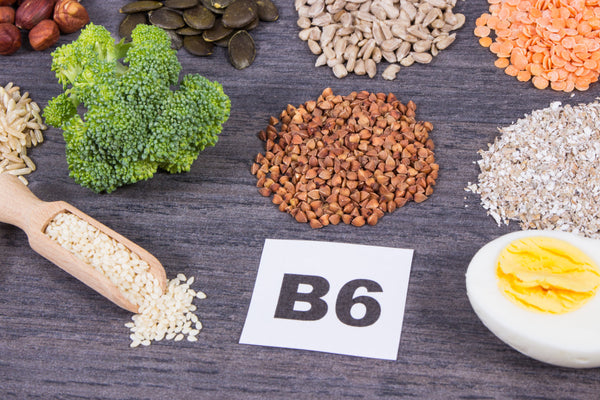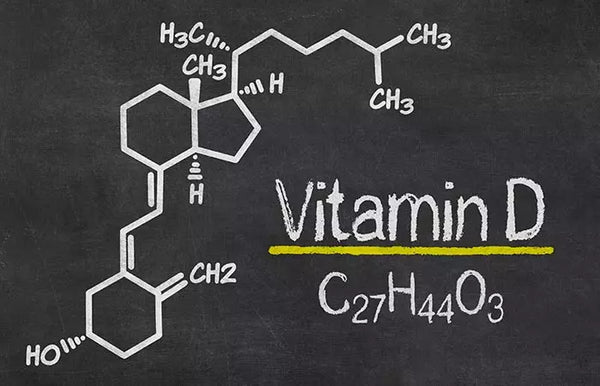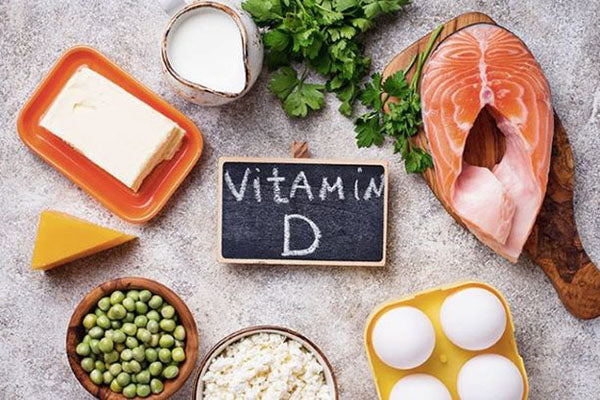
These Are The Various Benefits Of Vitamin D For Osteoporosis

These Diverse Benefits of Vitamin D For Osteoporosis. As we get older, it is essential to understand the changes that occur in the body and how we can protect our health for longevity.
Read: 5 Recommended Vitamins for Postpartum Recovery
Osteoporosis affects nearly 20% of women and 5% of men over 50 according to the CDC. People suffering from osteoporosis are more likely to have fractures, especially in the hips, forearm, wrist, and spine.
With many treatments available Vitamin D is one of the most reputable, but it raises questions.
How much Vitamin D for Osteoporosis is enough?
What Exactly Is Osteoporosis?
Osteoporosis is when bones in the body become weak and brittle due to loss of density.
Bones are living tissues that respond when receiving signals from other parts of the body. In osteoporosis, it is clear that the signal system between the bone and other systems does not work properly. This we know as a silent disease because most people with this condition do not notice it until they have a fracture.
It is estimated that even after a fracture, about 80% of these patients are still not diagnosed and treated for osteoporosis, the basic disease that causes fractures.
Protect Your Bones With Enough Nutrition
When it comes to bone health, focus on minerals and nutrients associated with bone structuring. Vitamin D, glucosamine, collagen, calcium, boron, and magnesium are considered some of the most fundamental aspects of good bone health.
What Is A Good Dose Of Vitamin D For Osteoporosis?
According to recent studies, it seems that less vitamin D is used to protect against osteoporosis. In fact, adults who take large amounts of this vitamin every day not only do not notice an increase in bone density but in some cases end up worse.
Using a more moderate dose of vitamin D supplements in the range of 1000-2000IU will be sufficient to contribute to an adequate level of bone density.
Best Vitamin D Forms?
First and foremost, there is no better form of Vitamin D than the sun. Since the beginning of life on Earth has thrived under the rays of strong solar energy and ensuring you get at least 15 minutes of sunlight a day can help balance natural levels.
How to Increase Vitamin D Absorption?
1. Healthy Intestines
To improve the absorption of vitamin D, it is important to ensure your gut health is under control. Things like leaky gut, irritable bowel disease, or autoimmune conditions can stop your body from utilizing the vitamins in your body.
2. More Boron And K2
To properly absorb vitamin D, it is also important to include vitamin K2, magnesium, zinc, and boron. This specific mineral plays an important role in your body's ability to store vitamin D in bones.
3. Skintone
Different parts of the Earth face different spectrums of UV rays, places closer to the equator will need less sunlight because they are stronger in this region. It is estimated that a person with darker skin can only absorb 25% of the sun's rays compared to those with pale skin.
4. Eat Fatty Fish
Eating omega-3 fish such as tuna, salmon, and sardines will help increase vitamin D levels and take supplements such as cod liver oil.
5. Get Enough Sleep
Vitamin D production is increased by sunlight and melatonin but low body temperature seems to be the biggest culprit.
As you sleep, your body produces less melatonin and allows itself to become colder. A cold room and artificial air conditioning can make it difficult for you to keep warm enough at night and can lead to poor vitamin D intake.
6. Cholesterol Intake
Don't miss eating your eggs! These studies have shown the implications of a low-cholesterol diet on our body, if you are prone to osteoporosis, it is important to eat a wide variety of free animal meats and fats to ensure proper nutrition.
Should You Take Supplements With Vitamin D For Osteoporosis?
As in the previous discussion, all Vitamin D is not the same, and the form of the supplement is not different. The two most well-known forms of this vitamin are vitamin D2, which functions as ergocalciferol and is of plant origin. While the other is Vitamin D3 or named cholecalciferol, which comes from animal sources such as egg yolks and fish.
The human body is much better at synthesizing the form of D3 compared to D2 and blood serum levels show a big difference when supplementing the two. Stick to animal-sourced D3 if you suffer from early-stage osteoporosis because bones are much better at absorbing it from this form.
Risk Factors for developing Osteoporosis
There are many risks involved with developing osteoporosis that many are irreversible including:
1. Gender
Statistics show women are 5x more likely to develop this bone density condition than male counterparts.
2. Age
The older you are, the greater the risk you have of developing a bone-related condition.
3. Ethnicity
If you are white or Asian, you have a higher chance of developing osteoporosis.
4. Genetics:
If there are cases of bone density conditions in the offspring of your family, then you are at a higher risk.
5. Body Skeleton
Those with smaller bone structures are more at higher risk and should make sure to always have adequate levels of nutrients.
Healthy Vitamin D Levels For Osteoporosis
To summarize this article, it is best to keep your Vitamin D levels in the healthy range of 4000IU or below on a daily basis. To achieve this, go out every day and expose your skin to direct sunlight for sufficient absorption of Vitamin D.
If you live in a climate without a lot of sunlight or in winter, it is better to try additional products. Regular exercise and dietary strategies to better protect the bones and you will lead a prosperous and healthy life.






